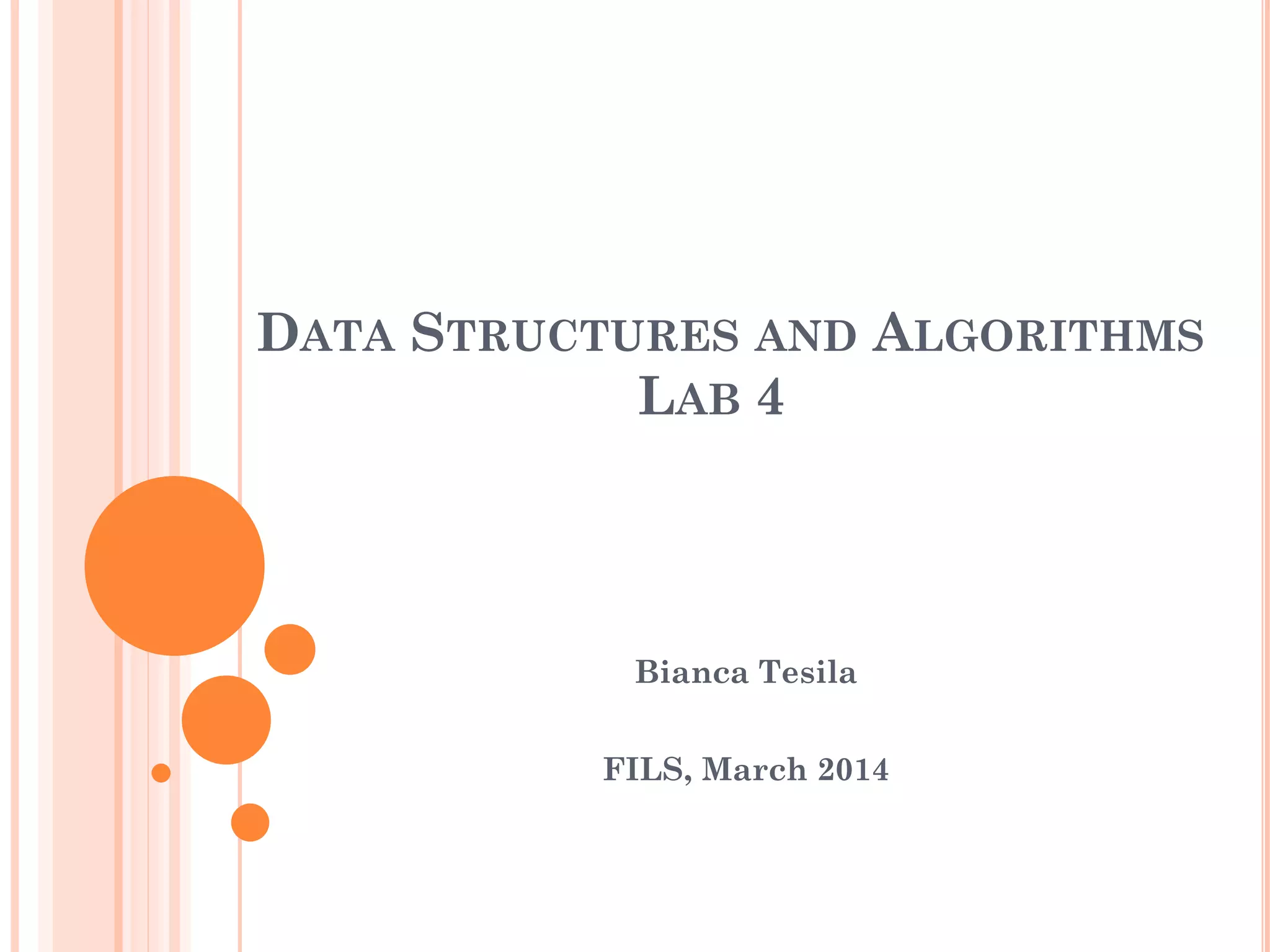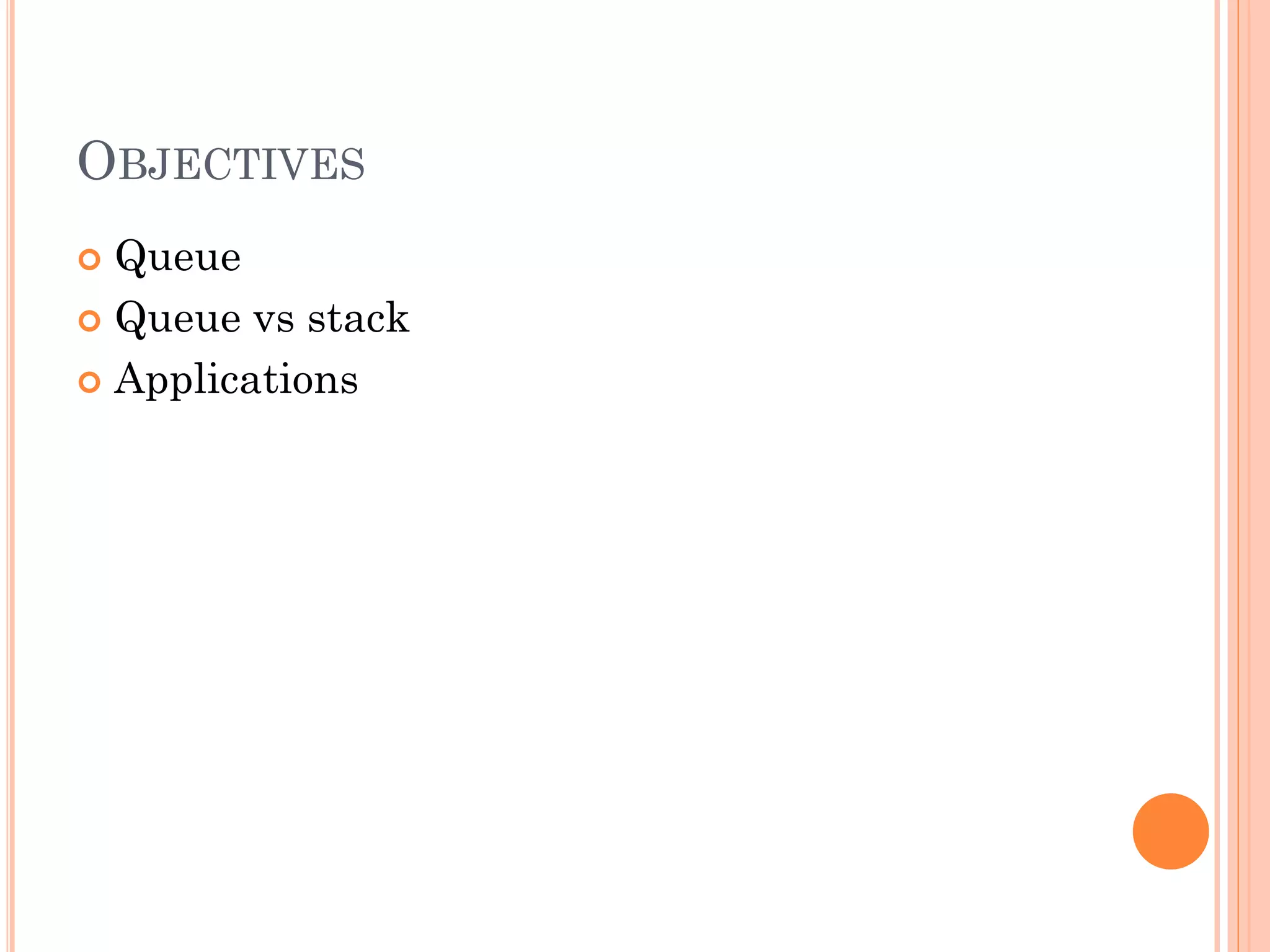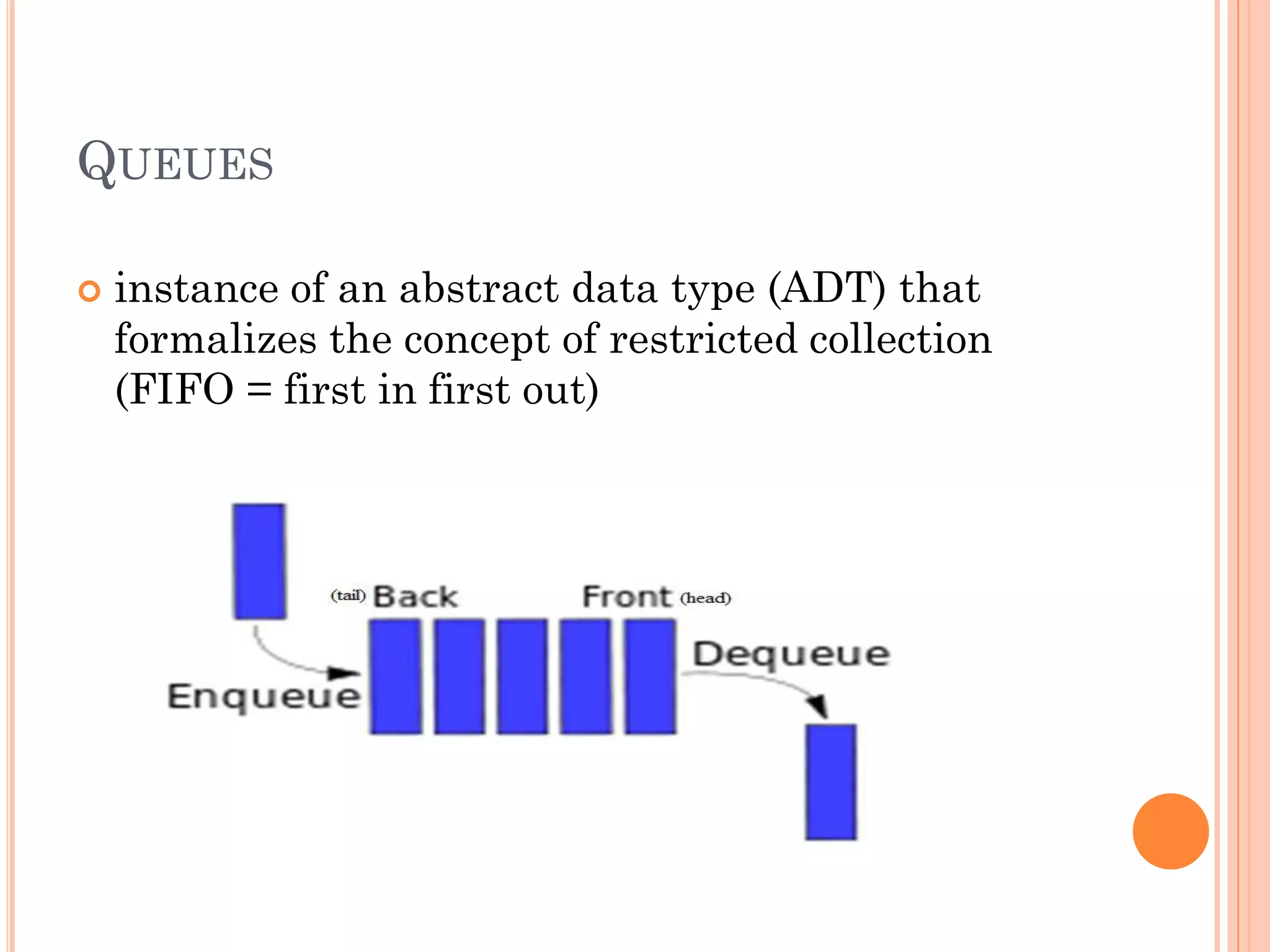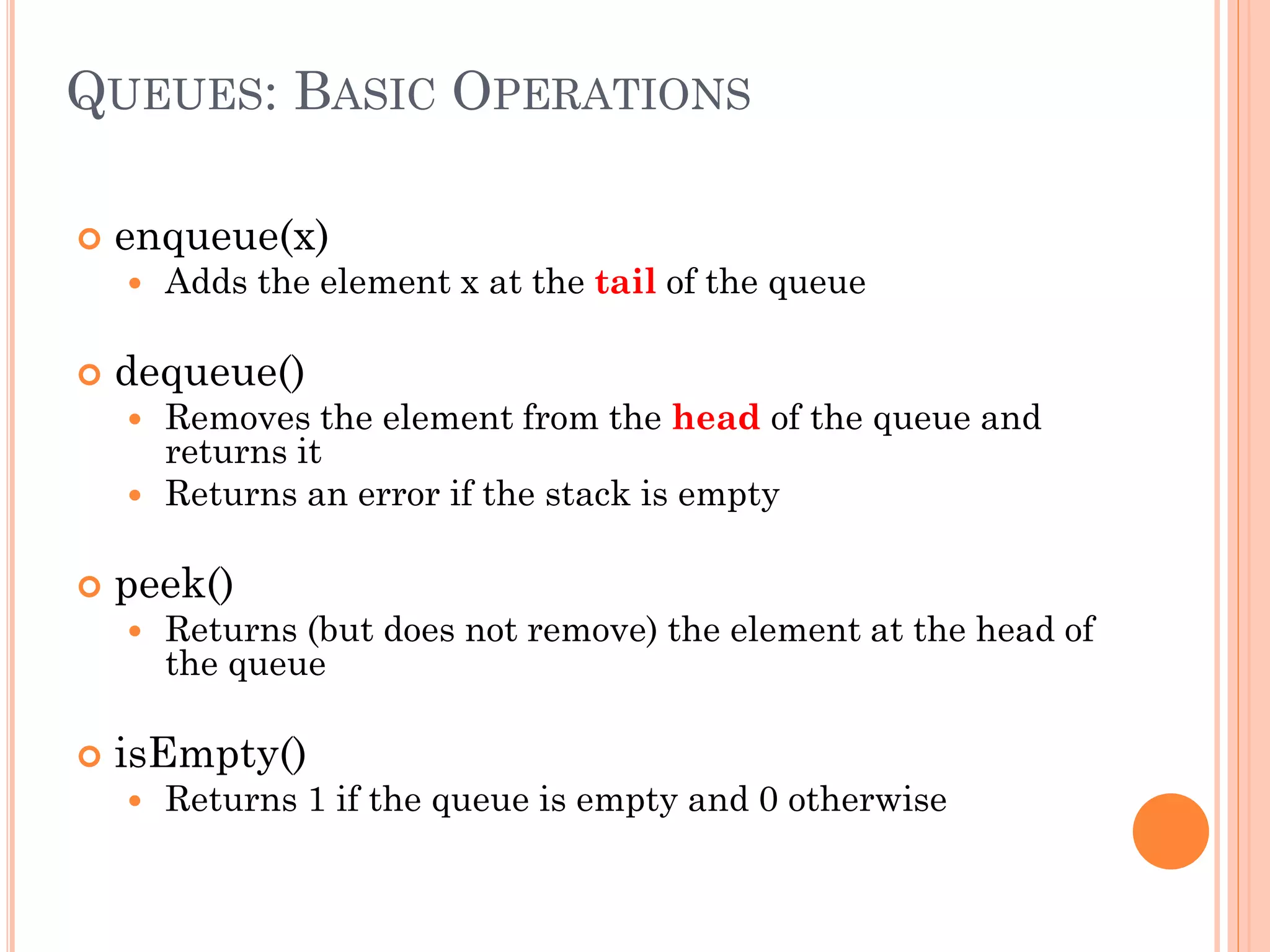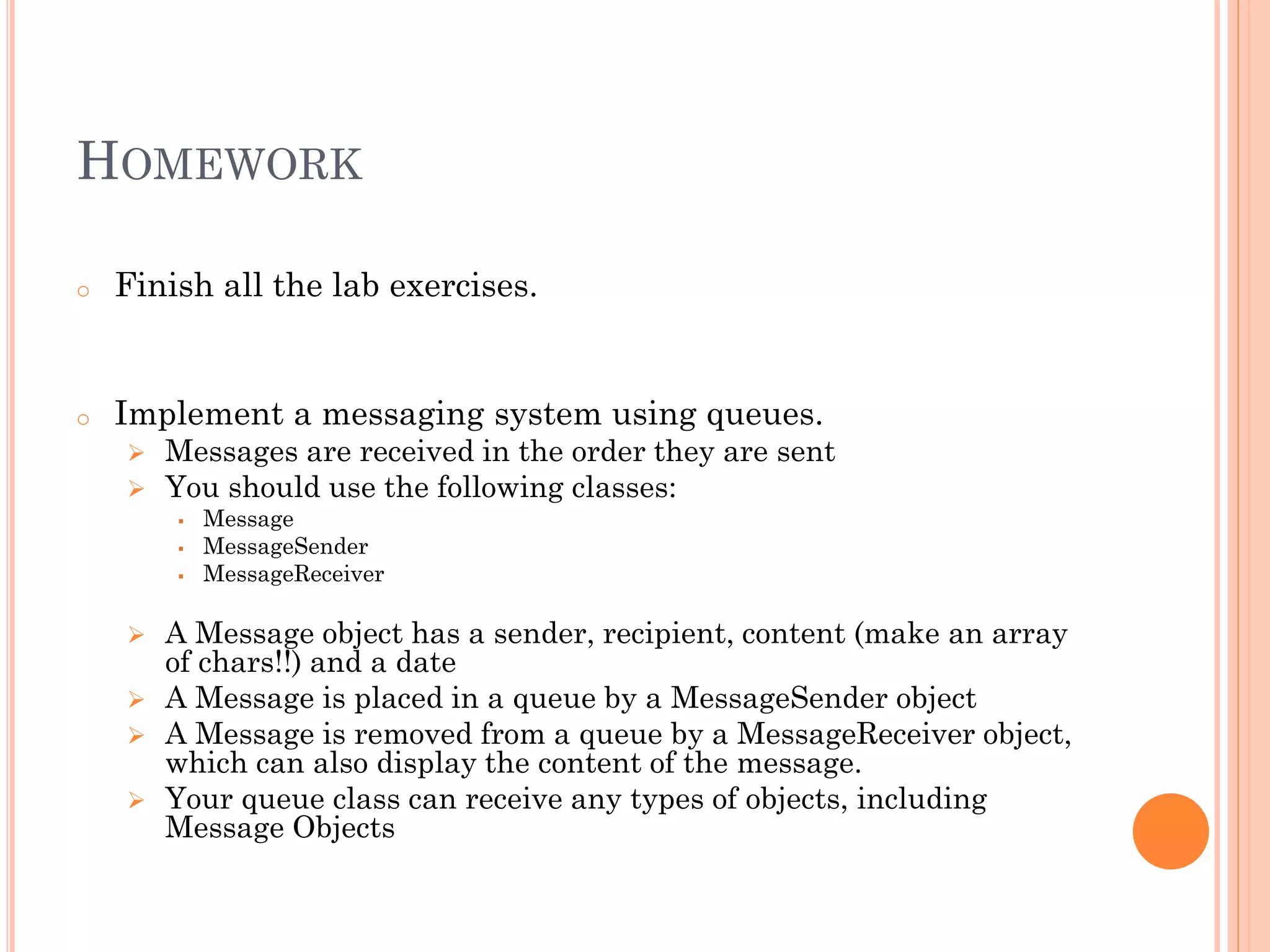This document discusses data structures and algorithms lab 4 on queues. It provides objectives on queues and their differences from stacks. It then discusses queues as an abstract data type with FIFO operations like enqueue to add and dequeue to remove elements. It covers queue implementation using arrays, circular arrays, and lists. Exercises are provided on implementing a stack with two queues and a queue with two stacks. Applications of queues and stacks in getting minimum elements are also discussed. The homework involves finishing exercises and implementing a messaging system using queues.
